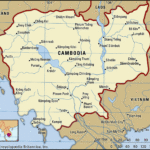The persistent myth of September 31st offers a fascinating glimpse into our relationship with time, technology, and the systems we create. While it’s a date that doesn’t exist in the Gregorian calendar, the search for it reveals intriguing insights. For a deeper dive into the complexities of time calculations, see this helpful resource on century-long time spans. Why does this myth endure, and what does it tell us about our evolving understanding of time?
The Gregorian Calendar: A Foundation of Modern Timekeeping
The Gregorian calendar, the globally dominant system, dictates that September has 30 days. This isn’t arbitrary but a carefully designed component of a system aligning with the solar year—the Earth’s orbit around the sun. This system, with its leap years and varied month lengths, reflects centuries of astronomical observation and refinement. The inclusion of leap years, adding an extra day (February 29th) almost every four years, accounts for the solar year being approximately 365.25 days long. This crucial adjustment keeps our calendar synchronized with the Earth’s journey around the sun, ensuring the long-term accuracy of seasons and astronomical events. The Gregorian calendar replaced the Julian calendar, addressing a slight inaccuracy in its predecessor that caused a gradual drift against the solar year. This change, implemented in 1582 under Pope Gregory XIII, highlights humanity’s continuous quest for precision in timekeeping.
A Historical Perspective: From Lunar Cycles to Solar Precision
The quest to measure time has captivated humanity for millennia. Early civilizations often relied on lunar cycles, resulting in lunar calendars. These were relatively simple to create based on the Moon’s phases but lacked the precision needed for tracking seasons, a critical element for agriculture and societal organization. As astronomical knowledge expanded, calendars evolved. The development of solar-based calendars, like the Gregorian, marked a significant advancement, allowing for more accurate tracking of the solar year and the cyclical changes of seasons. This shift demonstrates how calendar systems reflect the interplay between scientific understanding and practical needs. Different cultures around the world still maintain unique calendar systems. Some continue to use variations of lunar calendars, while others utilize lunisolar calendars that combine both lunar and solar cycles. These varied approaches reflect the rich tapestry of human cultures and their unique relationships with time, highlighting the importance of cultural context in understanding calendar systems.
The September 31st Myth: Human Error and Technological Quirks
Why does the myth of September 31st persist in a world governed by the Gregorian calendar? Often, it’s simple human error—a typographical slip on a keyboard or a miscalculation when dealing with dates. However, technology also plays a role. Software glitches in scheduling applications or website calendar functions can occasionally produce this non-existent date. These technological hiccups underscore the complex interplay between humans and the systems we create. Our increasing reliance on digital tools for scheduling and time management highlights the importance of meticulous programming, rigorous testing, and clear user interfaces. The prevalence of the September 31st error, even in coded systems, emphasizes the crucial role of human oversight and the understanding that even the most sophisticated technologies are susceptible to flaws. This reminds us that developing robust error-handling mechanisms and fostering critical thinking are essential for navigating our technology-driven world. The continued appearance of September 31st, therefore, serves as a subtle reminder of the limits of technology and the enduring importance of human understanding and vigilance.
- Unlock 6000+ words beginning with he: A comprehensive analysis - April 20, 2025
- Mastering -al Words: A Complete Guide - April 20, 2025
- Master Scrabble: High-Scoring BAR Words Now - April 20, 2025
















